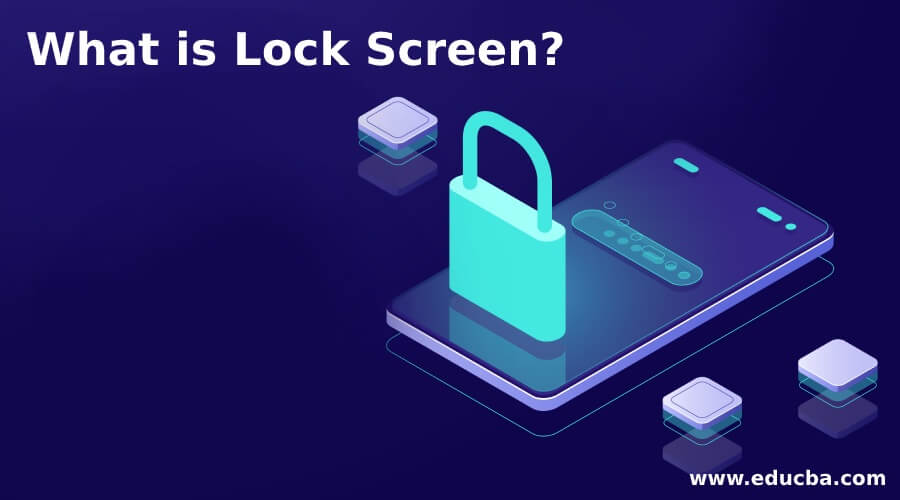Updated May 31, 2023

Definition of Lock Screen
The lock screen is a security feature for a computer, smartphone, or tablet that helps prevent protect from unauthorized access to the device. It’s an interface with a start-up view. If a device is locked, the applications of the device are limited. A locked unit helps to save unwanted users’ data. To secure the system, anybody attempting to use it requires a particular action or series of actions to be done correctly. Only the correct password or biometrics are available if a computer is locked and the password is entered. On your computer are the desktop, home screen, and app icons; if you open the window, you can use the window for free. To unlock a locked computer, the password or passphrase needs to be entered, the biometric reader accessed, or a certain motion or gesture on the screen, which scans the user’s eyes or analyses the user’s fingerprint.
Lock Screens by Platform
Here we discuss lock screens by platform:
1. Android Mobile Operating Systems
Android smartphones and laptops, similar to iPad and the iPhone, display more valuable knowledge than their Computer and Mac counterparts. However, since each manufacturer may configure the Android experience, the details can vary slightly from device to device. We’ll look at Android’s “vanilla,” which you will see on devices like Google Pixel. In addition to using an alphanumeric password or passcode, you can also secure your Android computer using a script. This helps you activate the computer easily by following the same sequence of lines on the screen rather than fooling around with letters or numbers entered. Typically, you unlock Android devices by swiping them on the phone.
2. The Windows Lock Screen
As hybrid tablet/laptop computers such as the Microsoft Surface have become more popular, Windows has edged closer and closer to the locking screens we see on our laptops and smartphones. Windows is less functional than a tablet, but it will display a snapshot of details, such as how many unread emails we have waiting for us, in addition to locking unwelcome guests out of a computer. In general, the Windows lock screen includes a password to open. The password is added to an account which will be set as the machine is set up. When you press the lock screen, the input box for it appears.
3. The Mac Lock Screen
It might seem strange that the least usable lock screen is on Apple’s Mac OS, but this is a small surprise. On handheld devices like smartphones and iPad, where we would like to get some data fast, usable lock screens make more sense. Generally, we are not so rushed whether we use our laptop or desktop computer. And unlike Microsoft, Apple is not converting the Mac OS into a laptop operating system/ hybrid tablet. In general, the Mac includes a password to open. The input box is still in the center of the lock display.
4. iPhone/iPad Lock Screen
If you have Touch ID set up to unlock your devices, the iPhone and iPad’s lock screens can be easily bypassed. The newest devices register your fingerprint so quickly that it will always take you straight to the Home Screen if you press the Home Button to wake up your computer. But you can click the Wake / Suspend button on the system’s right side if you only want to see the screen. Your most recent text messages can display on the lock screen on the primary device. However, it can do more than display your texts. Here are a few things you can do on the device with the lock:
Why Should We Use Lock Screen?
There is no utter yes or no answer as to whether it should include a security scan or a password on your computer to access it or not. Many of us are good at leaving our home computers without this verification. Still, it is worth remembering that everyone can quickly log in to vital websites such as Facebook or Amazon simply because the account information is always saved in our web browser.
Recommended Articles
This is a guide to What is Lock Screen? Here we also discuss the introduction and uses of lock screen and lock screens by platform. You may also have a look at the following articles to learn more –
